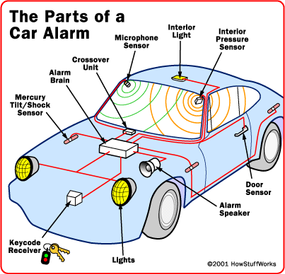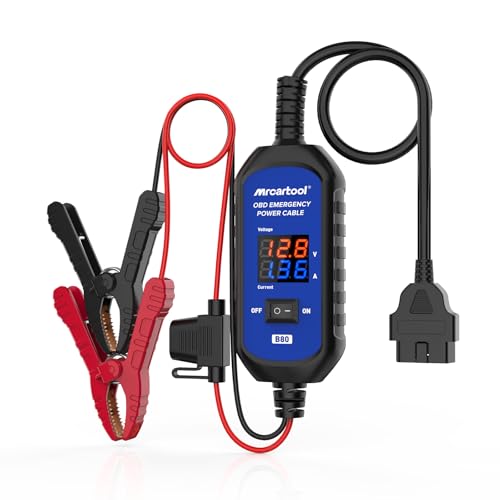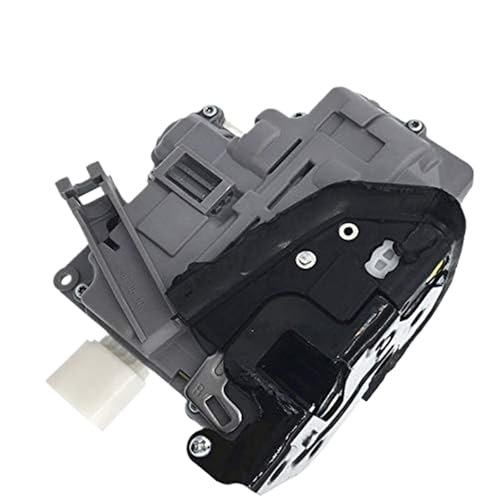Have you ever wondered if you can trigger your car alarm on purpose, or what makes it go off at the most inconvenient times? You might be trying to find your car in a packed parking lot, ward off a potential threat, or simply figure out why your car alarm keeps waking up the neighborhood. Understanding how to control and troubleshoot your car’s security system is a crucial part of vehicle ownership.
Yes, you can intentionally trigger your car alarm. The most common method is by pressing and holding the dedicated “panic” button on your key fob, which is a feature designed for personal safety and locating your vehicle. You can also manually trigger the alarm by testing its sensors.
Leveraging extensive analysis of how these systems operate, this guide unpacks everything you need to know. We’ll explore the core components of your alarm, proven methods for intentional activation, the surprising reasons behind unexpected triggers, and step-by-step troubleshooting for those frustrating false alarms. This guide provides the critical insights to help you effectively manage your car’s security.
Key Facts
- Intentional Activation is a Feature: Most car alarms include a “panic button” on the key fob specifically designed for intentional triggering in emergencies or to locate the vehicle.
- Vibration is a Primary Trigger: Shock and vibration sensors are a core component, and can be set off by significant bumps, loud noises like thunder, or even heavy vehicles passing by, as indicated by multiple security system analyses.
- Battery Health is Crucial: A weak or dying car battery is one of the most common culprits for random false alarms, as the voltage fluctuations are often misinterpreted by the alarm’s control unit as a security breach.
- Multiple Deactivation Methods Exist: You can typically turn off a sounding alarm by using the key fob’s unlock button, inserting the physical key in the door, or starting the car’s engine, providing several quick solutions.
- Environmental Factors Play a Role: Well-established research indicates that external elements like strong winds, heavy rain, or even animals jumping on the vehicle can be enough to trigger a sensitive car alarm system.
What Are the Core Components of a Car Alarm System?
A car alarm system works using a network of sensors (detecting impact, entry, etc.) connected to a central control unit (the “brain”). When a sensor is triggered, the control unit activates a loud siren or the car’s horn to create an alert. Ever wondered what’s happening inside your car’s security system when it’s armed? It’s a team of components working together to protect your vehicle. Based on established technical descriptions, these systems are a blend of sensors and responders all orchestrated by a central computer.
- Sensors: These are the “senses” of the system, detecting events like an open door, impact, or movement. Common types include door, hood, and trunk sensors, alongside shock or vibration sensors.
- Control Unit (Brain): The central computer that processes signals from sensors and decides when to sound the alarm. It’s the core decision-maker of the entire security setup.
- Siren/Horn: The audible alert that activates when triggered by the control unit. This is the component that grabs everyone’s attention, either with a dedicated high-pitched siren or by honking the car’s own horn.
- Key Fob/Remote: Your wireless control to arm and disarm the system. This remote gives you direct command over the alarm’s state.
How to Intentionally Trigger Your Car Alarm: Methods and Purpose
Yes, you can intentionally trigger your car alarm, most commonly by pressing the dedicated “panic” button on your key fob. This is designed to draw attention in an emergency or help you locate your vehicle. Did you know most key fobs have a ‘hidden’ feature designed for your safety? It’s the panic button. Learning to use it, and other methods, gives you more control over your car’s security features. Industry analysis often indicates that these features are included for specific, practical purposes beyond just theft deterrence.
Pro Tip: The panic button is designed as a personal security feature to draw attention in an emergency. Use it to deter threats or locate your car in a crowded lot.
Here are the primary ways you can set off your car alarm on purpose:
- Use the Panic Button: This is the most direct method. Most car remotes have a dedicated button, often colored red or marked with an alarm icon, that instantly triggers the alarm when pressed.
- Manually Test the Sensors: You can also trigger the alarm by simulating a threat. This is useful for testing if the system is working correctly. This involves activating the shock sensors by rocking the vehicle or the door sensors by using a key to open a locked door.
If your key fob isn’t working when you try to use the panic button, you may need to look into troubleshooting a faulty key fob.
Using the Panic Button on Your Key Fob
Press and hold the dedicated panic button on your car’s key fob to instantly trigger the alarm; press the unlock button to turn it off. This is the easiest and most common way to intentionally activate your vehicle’s alarm system. It’s a straightforward process designed for quick use in stressful situations.
- Locate the panic button on your key fob. It is often red or distinguished by an alarm or horn symbol.
- Press and hold the button for a few seconds until the alarm activates.
- The alarm, consisting of the siren or horn and flashing lights, will activate immediately.
- To stop the alarm, simply press the “unlock” button on the same key fob.
Manual Triggers for Testing Your System
To manually test or trigger your alarm, arm the system and then either firmly rock the vehicle to activate the shock sensor or use the physical key to open a door. Want to check if your sensors are working correctly? Here’s how to safely test them. This process helps you confirm that your car’s primary lines of defense are operational without needing any special tools. If your alarm is too sensitive (or not sensitive enough), you might consider adjusting sensor sensitivity.
- Rock the Vehicle: After arming the alarm, wait about a minute for it to fully engage. Then, firmly rock the car back and forth. This action should be enough to trigger a properly calibrated shock or vibration sensor. Do not strike or otherwise damage the vehicle.
- Open a Locked Door: Arm the alarm system and then use your physical key to unlock and open a door. On most systems, this will be interpreted as an unauthorized entry and will trigger the alarm.
What Triggers a Car Alarm Unexpectedly? Common Causes Explained
Common triggers for car alarms include unauthorized entry (opening a door), significant vibration or impact (from bumps or loud noises), and environmental factors like strong wind, heavy rain, or even animals interacting with the vehicle. Ever had your alarm go off during a thunderstorm? Here’s the science behind why that happens. It’s not just about attempted theft; your car’s alarm is designed to react to a range of physical disturbances. Numerous studies and technical manuals confirm that shock sensors are calibrated to detect these non-theft events.
The following table categorizes the most common triggers for a car alarm:
| Trigger Category | Specific Causes | Sensor(s) Involved |
|---|---|---|
| Unauthorized Entry | Opening doors, hood, or trunk; Ignition tampering. | Door, Hood, Trunk, Ignition Sensors |
| Vibration & Impact | Significant bumps, window breakage, loud noises, someone brushing against the car. | Shock Sensor, Glass Break Sensor |
| Environmental Factors | Strong winds, heavy rain/hail, animals jumping on the car. | Shock Sensor, Vibration Sensor |

Why Your Car Alarm Keeps Going Off Randomly: Troubleshooting False Alarms
Random car alarms are often caused by system malfunctions, most commonly a weak or dying car battery causing voltage fluctuations, a faulty key fob with a low battery, or defective/dirty sensors on the hood, doors, or trunk. Before calling a mechanic, check the simplest cause first: your car battery. A practical approach frequently seen to yield results involves starting with the most common and easiest-to-fix issues. A weak battery is one of the most common culprits for random alarms, a fact supported by data from numerous automotive repair resources.
Here is a diagnostic guide to the most common causes of phantom alarms:
- Weak Car Battery: A dying battery is a top offender. It causes voltage drops that the alarm’s control unit can misinterpret as tampering or an electrical fault, triggering an alert. You can learn how to check your car battery to rule this out.
- Faulty Key Fob: A low or failing battery in your key fob can cause it to send erratic, ghost signals to your car’s receiver. The car interprets these signals as a command to arm, disarm, or panic, leading to random alarms.
- Defective Latch Sensors: Over time, the sensors on your hood, doors, or trunk can accumulate dirt, grime, or become damaged or misaligned. This can prevent them from making a clean connection, making the system think an entry point has been breached when it hasn’t.
- Overly Sensitive Sensors: If the shock or vibration sensors are set too sensitively, minor events like a gust of wind, a passing truck, or even a cat jumping on the hood can be enough to set them off.
- Poor Installation or Faulty Wiring: Especially common with aftermarket alarms, improper installation can lead to a host of electrical gremlins. Corroded, loose, or short-circuited wires can send false signals throughout the system.
How to Quickly Deactivate a Car Alarm That Is Going Off
To turn off a car alarm, first try pressing the unlock button on your key fob or starting the car’s engine. If that fails, using the physical key to unlock the driver’s door will usually deactivate it. When your alarm is blaring, you need a fast solution. These steps are ordered from the simplest and most common fixes to the more drastic measures for when nothing else works.
Warning: Disconnecting the battery or pulling the alarm fuse should be a last resort, as it can reset your car’s clock, radio presets, and other electronic systems.
- Press the Unlock Button: This is the most straightforward method. Use your key fob to press the unlock button. This signals to the system that the owner is present and deactivates the alarm.
- Use the Physical Key: If the fob’s battery is dead, insert your physical key into the driver’s side door lock and turn it to unlock the car. This manual override will stop the alarm on most vehicles.
- Start the Engine: Get in the car and turn the ignition to start the engine. This confirms to the vehicle’s computer that an authorized key is being used, which typically silences the alarm.
- Last Resort: Disconnect the Battery: If the alarm will not shut off, you may need to disconnect the car’s battery. Open the hood and use a wrench to loosen the nut on the negative terminal, then remove the cable. This will kill power to the entire car, including the alarm.
- Last Resort: Pull the Fuse: Locate your car’s fuse box (there may be one in the cabin and one under the hood). Consult your owner’s manual to identify the fuse for the alarm system and pull it out with a fuse puller or pliers.
FAQs About Triggering Car Alarms
Can sound trigger a car alarm?
Yes, loud sounds like thunder can trigger a car alarm by creating intense vibrations that activate the car’s shock sensor. But it’s an indirect effect. Extremely loud noises from sources like thunder, large trucks, or modified vehicle exhausts don’t have a “sound sensor.” Instead, the powerful sound waves create physical vibrations in the air and ground that shake the vehicle. If these vibrations are strong enough, the car’s shock sensor detects them as an impact and triggers the alarm.
Can someone else trigger my car alarm remotely?
Yes, specialized devices known as “car remote jammers” or “triggers” can interfere with a car alarm’s radio signal and potentially set it off, though this is not a common occurrence. While uncommon for the average car owner to encounter, the technology does exist. These devices work by either flooding the radio frequency with noise or mimicking the signal from a key fob, which can confuse the alarm’s control unit and cause it to activate. However, this is more of a theoretical risk than a daily threat for most people.
How can I trigger my car alarm without the key fob?
To trigger a car alarm without the key fob, you can try firmly rocking the vehicle to set off the shock sensor or, on some systems, unlock the door with the physical key while the alarm is armed. If your remote is lost or broken, you can still test the system manually. For more detail on testing sensors, see the methods above.
- Rock the car: After arming the system (usually by locking it with the door panel button), a significant and sustained vibration from rocking the car can be enough to trigger a sensitive shock sensor.
- Use the physical key: On many vehicles, if you arm the alarm and then use the physical key to unlock a door, the system will register it as an unauthorized entry and sound the alarm before you can disarm it by starting the engine.
Will a low car battery cause the alarm to go off?
Yes, a low or dying car battery can cause the alarm to go off randomly because the system’s control unit interprets the resulting voltage drops as a sign of tampering. This is a very frequent cause of false alarms. Evidence from automotive service bulletins suggests the alarm’s computer is designed to monitor the car’s electrical system for stability. When a failing battery provides inconsistent or low voltage, the control unit reads this fluctuation as a potential attempt to disconnect the power or tamper with the wiring, triggering the alarm as a precaution.
Final Summary: Key Takeaways on Triggering Your Car Alarm
Understanding the triggers and functions of your car alarm moves you from being a victim of its random squawks to a confident operator of your vehicle’s security. You now know that you can intentionally trigger your alarm on car for safety and that many “random” alarms have logical, fixable causes.
- You Can Trigger It: You have control and can intentionally trigger your alarm, primarily using the panic button for safety or to find your car.
- Understand External Triggers: Alarms react to more than just theft; significant impacts, severe weather, and even loud noises creating vibrations can set them off.
- Troubleshoot False Alarms: Random alarms are often a sign of a system fault, with the car battery, key fob battery, and dirty latch sensors being the most common culprits.
- Know How to Deactivate: You can quickly and easily silence a sounding alarm by using your key fob’s unlock button, the physical key in the door, or by simply starting the engine.
Take these insights and confidently manage your vehicle’s security, whether you’re testing the system or troubleshooting a pesky false alarm! For specific details about your alarm’s sensitivity settings or features, always consult your vehicle’s owner’s manual.







![What Car Is Chevy Bringing Back in [year]? New Lineup Revealed 10 What Car Is Chevy Bringing Back in [year]? New Lineup Revealed](https://carxplorer.com/wp-content/uploads/2026/01/What-Car-Is-Chevy-Bringing-Back-in-year-New-Lineup-Revealed-1-1-60x60.jpg)
